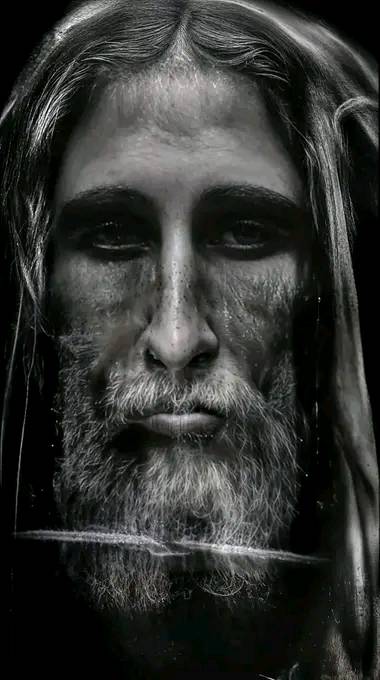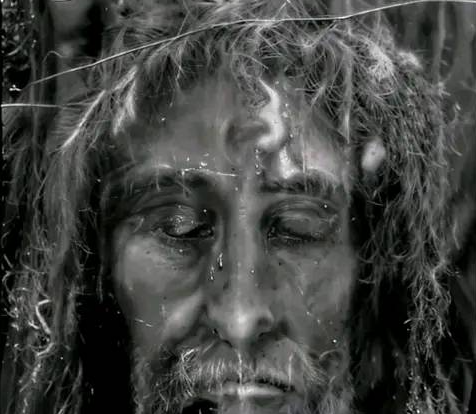1. Description and Significance
Thank you for reading this post, don't forget to subscribe!The Shroud of Turin is a linen cloth measuring about 14 feet by 3.5 feet, bearing the faint front and back image of a crucified man. Many Catholics and Christians believe this image is the burial shroud of Jesus Christ, miraculously imprinted with His likeness at the moment of the Resurrection.
For the Catholic Church, the Shroud is not only a physical relic but also a profound sign of Christ’s Passion, Death, and Resurrection—what Pope John Paul II called a “mirror of the Gospel.”
2. Origins and Early History
The precise origin of the Shroud is debated, but several historical paths are suggested:
a. The First Century – Possible Connection to Jesus
* According to Gospel accounts (Matthew 27:59, John 19:40), Jesus was wrapped in a linen cloth after His crucifixion.
* Some traditions suggest that the Shroud is this same cloth, preserved by early Christians as a sacred relic of Christ’s Passion.
* In the early centuries, silence and secrecy may have surrounded the Shroud to protect it during times of persecution.

b. Edessa and Constantinople
* A famous relic known as the Image of Edessa or **Mandylion** was venerated in the city of Edessa (modern-day Şanlıurfa, Turkey) as early as the 6th century. It was described as a miraculous image of Christ “not made by human hands” (*acheiropoietos*).
* In 944 AD, this relic was transferred to Constantinople, where it was revered until the city’s sack in 1204 by the Crusaders. Many historians speculate that the Shroud of Turin and the Mandylion may be the same object, folded in such a way that only Christ’s face was visible.
c. Western Europe – From Lirey to Turin
* The Shroud reappeared in historical records around **1354**, when it was displayed in **Lirey, France**, by the French knight Geoffroi de Charny.
* In 1453, it was transferred to the House of Savoy in Chambéry, and later to Turin, Italy, where it remains today in the Cathedral of St. John the Baptist.
* It narrowly survived a devastating fire in **1532**, which left scorch marks still visible today.
3. Meaning for Catholics
Catholics regard the Shroud as a **visual Gospel** that brings the Passion to life:
* The image shows wounds consistent with crucifixion: pierced wrists and feet, scourging marks, a side wound, and a crown of thorns.

* It provides a strikingly realistic portrayal of the sufferings of Christ described in Scripture.
* For the faithful, it is not merely a relic but a meditation aid—a way to contemplate the mystery of Christ’s suffering love.
Pope Benedict XVI described it as an “icon written in blood,” emphasizing that it speaks not only through science but through faith.
4. Why Catholics Believe It May Be the Real Face of Christ
Catholics are not bound by dogma to believe in the Shroud, but many consider it the most compelling relic of Christ. Reasons include:
a. Historical Continuity
The Shroud’s path from Edessa to Constantinople to Turin fits with early Christian veneration of images believed to be linked to Jesus.
b. Scientific Investigations
1898: When photographed for the first time, the negative revealed a lifelike face not easily visible to the naked eye. This shocked the world and began modern studies.
STURP (Shroud of Turin Research Project, 1978): Researchers concluded that the image is not a painting, not a scorch, and not made by pigments or dyes. Instead, it is a superficial discoloration on the linen fibers.
* Bloodstains have been identified as real human blood, type AB, consistent with ancient Middle Eastern origin.
* The wounds match crucifixion as practiced in the Roman Empire.
c. Faith and Symbolism
For believers, the Shroud may be the physical trace left at the Resurrection, when Christ’s glorified body passed through the cloth, leaving a mysterious imprint.
It embodies what Catholics call an acheiropoietos—an image “not made by human hands,” pointing to divine action.
5. The Church’s Position
The Catholic Church does not officially declare the Shroud as the burial cloth of Jesus but treats it with deep reverence. Popes from Pius XII to Francis have encouraged veneration, calling it a sign of Christ’s suffering and love.
In pilgrimages and expositions, millions of Catholics pray before the Shroud, not as if worshiping the cloth, but as a means of drawing closer to Christ Himself.
6. Conclusion
The Shroud of Turin stands at the crossroads of history, science, and faith. Historically, it connects to ancient Christian traditions of relics and sacred images. Spiritually, it reflects the Passion and Resurrection in a tangible way. Catholics see in it not only the possibility of beholding the true face of Christ, but also a call to deeper conversion, as the cloth silently proclaims the word of God
![]() “He was pierced for our transgressions … and by His wounds we are healed” (Isaiah 53:5).
“He was pierced for our transgressions … and by His wounds we are healed” (Isaiah 53:5).
Researched from CGPT
